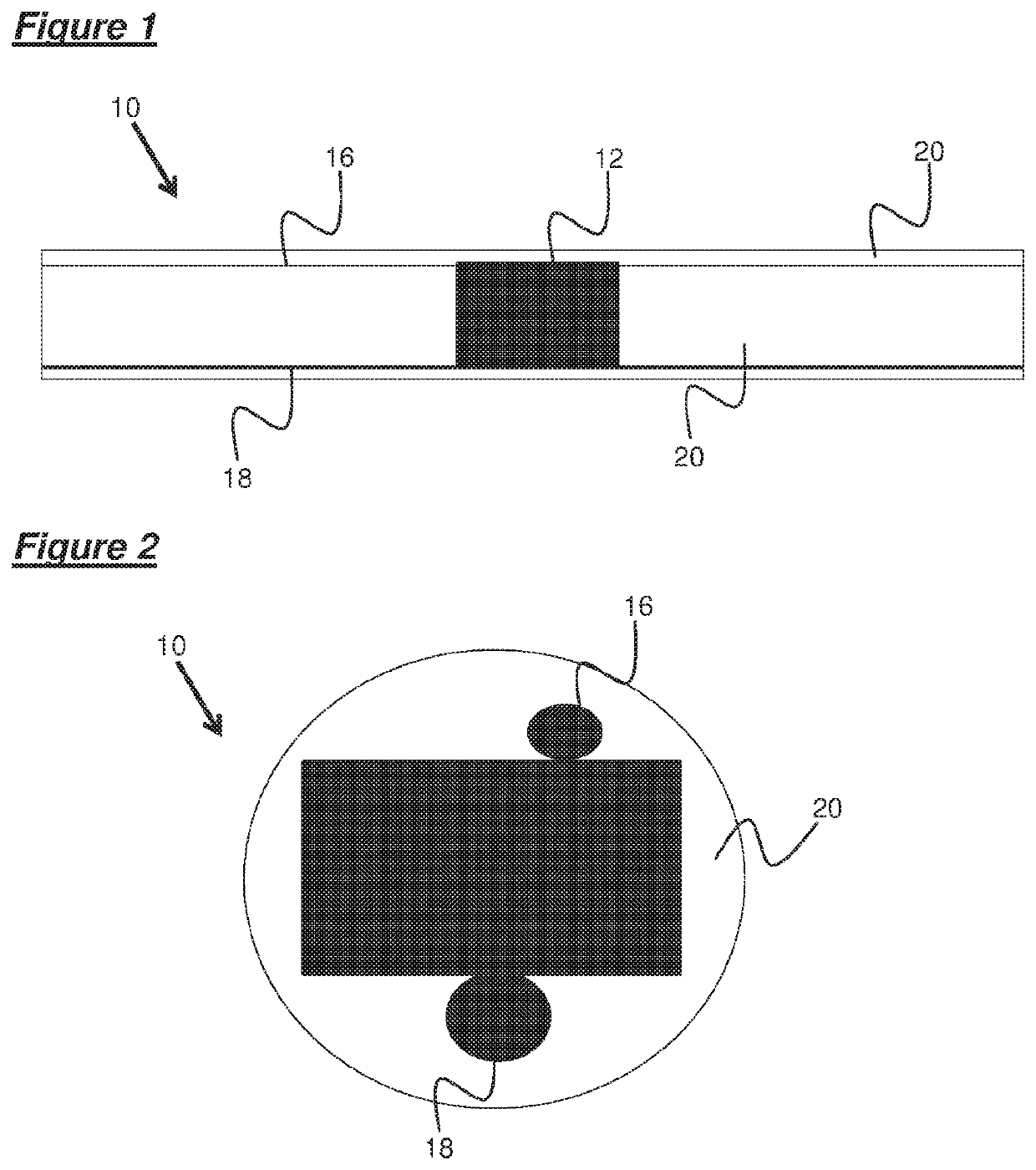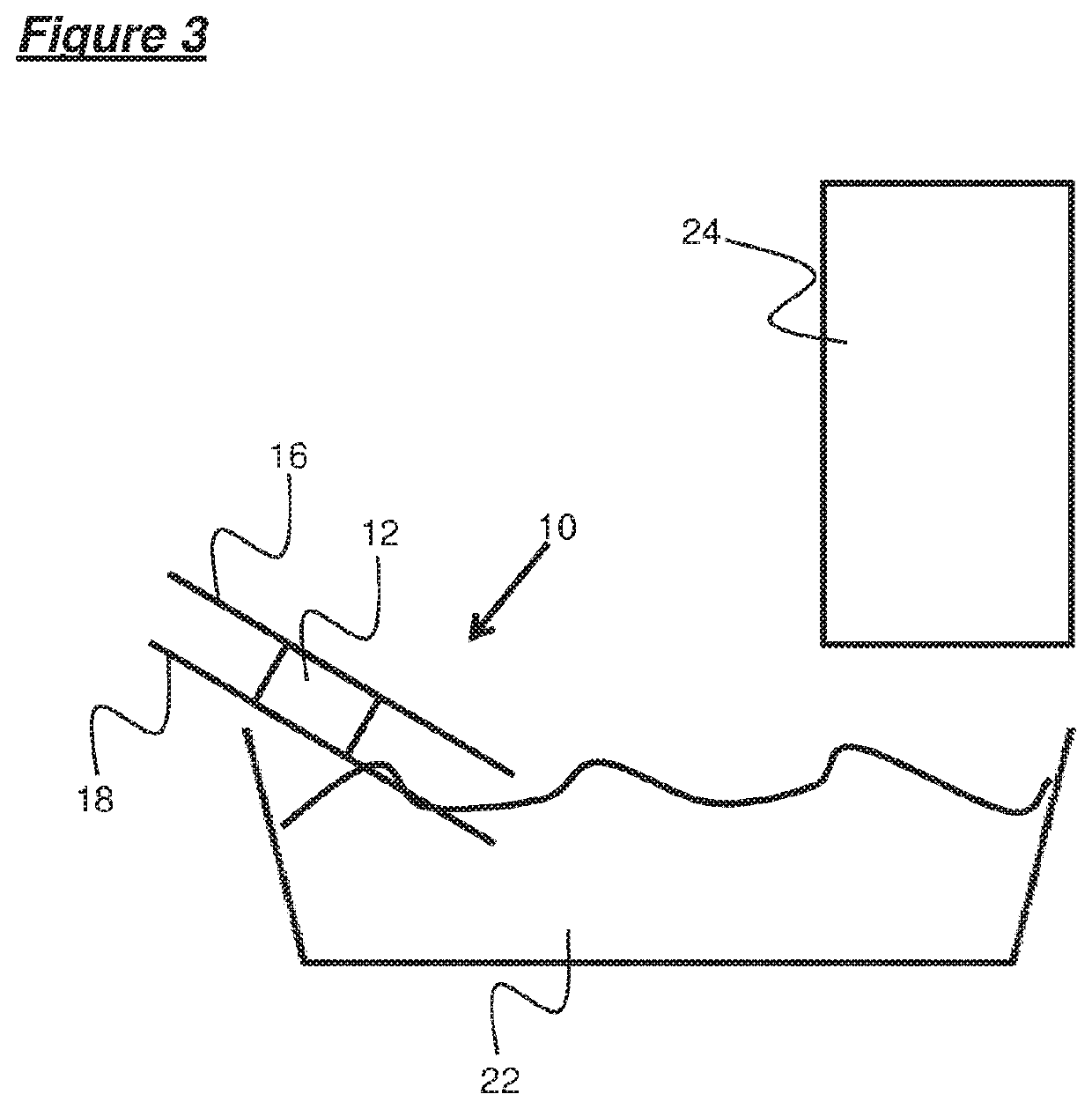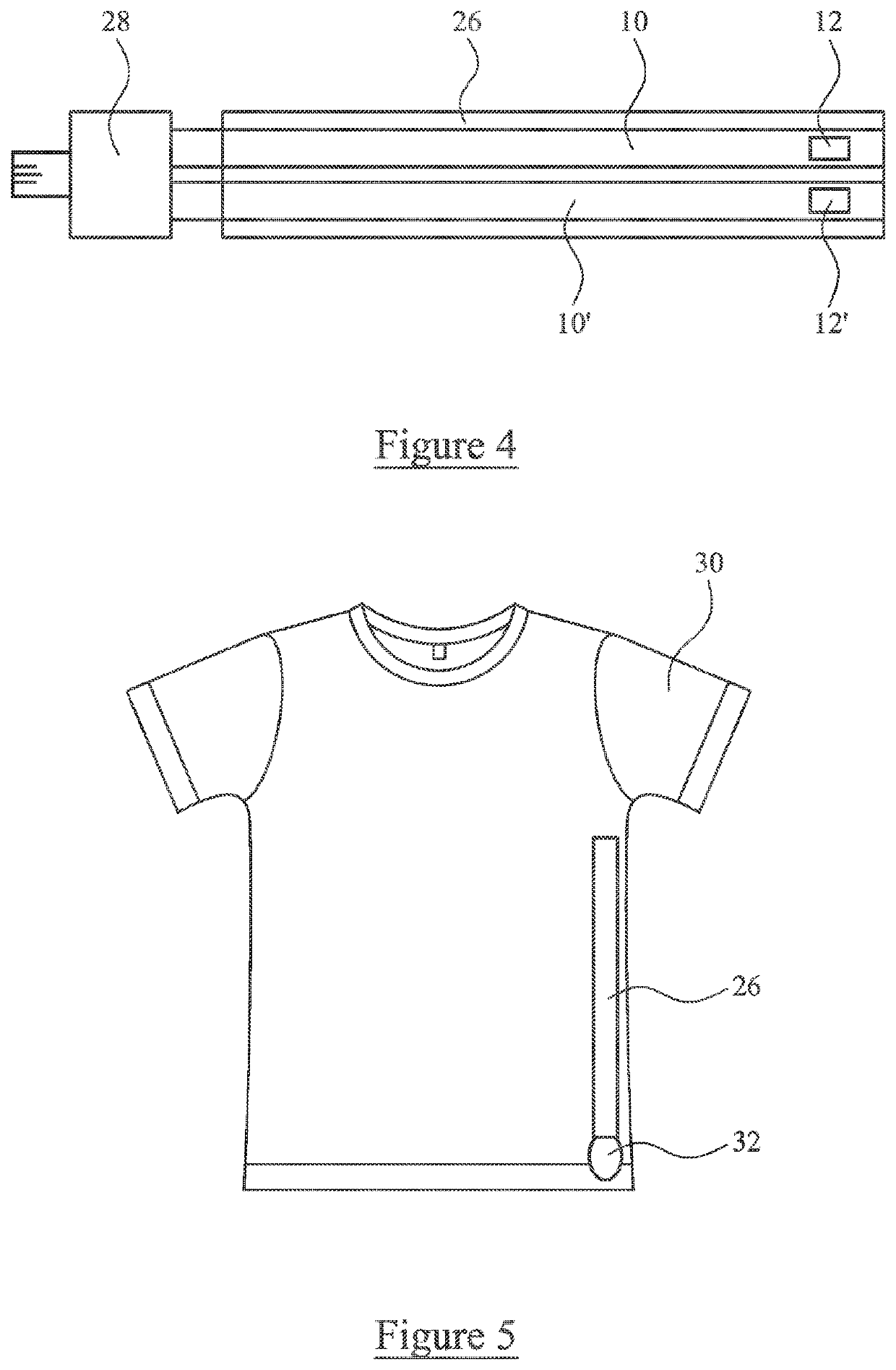Relating to textiles incorporating electronic devices
a technology of electronic devices and textiles, applied in the field of textile incorporation of electronic devices into textiles, can solve the problems of damage to conductive devices, gaps between packaging fibers and also between fibers that form the retaining sleeve, and are associated with such yarns
- Summary
- Abstract
- Description
- Claims
- Application Information
AI Technical Summary
Benefits of technology
Problems solved by technology
Method used
Image
Examples
second embodiment
[0075]a fiber according to embodiments of the present invention, generally designated 100, is shown schematically in FIG. 8.
[0076]The fiber 100 comprises an electronic device 102, first 104 and second 106 electrical conductors, a reinforcing thread 108, a resin body 110, and first 112 and second 114 electrical connectors.
[0077]The electronic device 102 may be any appropriate electronic device, but in the present case is a temperature sensor 12. The first 104 and second 106 electrical conductors are formed from copper wire, and are electrically connected to the first 112 and second 114 electrical connectors of the temperature sensor 102. The first 104 and second 106 electrical conductors extend across the entire length of the fiber 100, as shown in FIG. 8.
[0078]The reinforcing thread 108 extends across the entire length of the fiber 100, as shown in FIG. 8. The reinforcing thread 108 may be formed of any material sufficient to reinforce the fiber 100, and in the present case is forme...
fourth embodiment
[0081]a fiber according to embodiments of the present invention, generally designated 300, is shown schematically in FIG. 10.
[0082]The fiber 300 comprises an electronic device 302, first 304 and second 306 electrical conductors, a reinforcing thread 308, and first 310, second 312, third 314, and fourth 316 resin bodies.
[0083]The electronic device 302 in the fourth embodiment is an RFID tag. The first 304 and second 306 electrical conductors are formed from copper wire, and are electrically connected to the RFID tag 302. The first 304 and second 306 electrical conductors extend across the entire length of the fiber 300, as shown in FIG. 10.
[0084]The reinforcing thread 308 extends across the entire length of the fiber 300, as shown in FIG. 10. The reinforcing thread 308 may be formed of any material sufficient to reinforce the fiber 300, and in the present case is formed from nylon.
[0085]The first resin body 310 is formed of epoxy resin and encapsulates the RFID tag 302, along with po...
PUM
| Property | Measurement | Unit |
|---|---|---|
| diameter | aaaaa | aaaaa |
| thermal conductivity | aaaaa | aaaaa |
| length | aaaaa | aaaaa |
Abstract
Description
Claims
Application Information
 Login to View More
Login to View More - R&D
- Intellectual Property
- Life Sciences
- Materials
- Tech Scout
- Unparalleled Data Quality
- Higher Quality Content
- 60% Fewer Hallucinations
Browse by: Latest US Patents, China's latest patents, Technical Efficacy Thesaurus, Application Domain, Technology Topic, Popular Technical Reports.
© 2025 PatSnap. All rights reserved.Legal|Privacy policy|Modern Slavery Act Transparency Statement|Sitemap|About US| Contact US: help@patsnap.com



